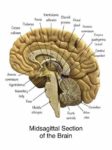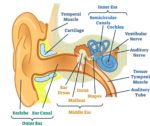Human Stomach Anatomy: The Antrum
The human stomach, a key component of the gastrointestinal (GI) tract, is a muscular organ that plays a crucial role in digestion. It is responsible for the production of enzymes and acids that break down food, preparing it for absorption in the small intestine. The stomach’s structure is complex, with several distinct regions each performing specific functions. One such region is the antrum.
The antrum, also known as the gastric antrum, is located in the lowermost part of the stomach. It is somewhat funnel-shaped, with its wide end joining the lower part of the body of the stomach and its narrow end connecting with the pyloric canal. This canal then empties into the duodenum, the upper division of the small intestine.
The antrum represents the distal third of the stomach, proximal to the pyloric sphincter. The junction between the antrum and the corpus (the body of the stomach) is poorly demarcated. By external examination, the antrum comprises the portion of the stomach distal to the incisura, a notch on the lesser curvature.
In the body, the antrum contracts and begins to mix food. It holds food until the stomach is ready to send it to the small intestine. The pylorus is the bottom part of the stomach, which includes the pyloric sphincter. This ring of tissue controls when and how the stomach contents move to the small intestine.
The gastric antrum contains mucus-secreting cells and gastrin-secreting endocrine cells. These cells play a vital role in the digestive process. The mucus-secreting cells produce mucus that protects the stomach lining from the corrosive effects of stomach acid. The gastrin-secreting endocrine cells, on the other hand, produce gastrin, a hormone that stimulates the production of stomach acid.
The antrum’s function and structure make it a critical component of the digestive system. However, it can be affected by various medical conditions. Gastritis, an inflammation of the stomach, can involve the gastric antrum. Peptic ulcers can also affect the gastric antrum, leading to the development of antral ulcers. These conditions can cause symptoms such as nausea, vomiting, stomach cramps, and indigestion.
In conclusion, the antrum is a vital part of the stomach that plays a significant role in the digestion process. Its unique structure and function enable it to mix food, regulate the passage of food to the small intestine, and contribute to the production of essential digestive substances. Understanding the antrum’s anatomy and function is crucial for maintaining digestive health and managing stomach-related conditions..



